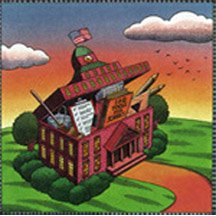3 percent of samples in school water fountains and sinks show elevated level |
| Ricardo Kaulessar Reporter staff writer |
| SATISFIED? NOT EXACTLY � Members of the Parents and Communities United for Education welcomed the final results of lead testing by the Jersey City school district, but still had questions. | ||
After 1,301 sources of water in the Jersey City public schools were tested for lead starting in May - including water fountains and bathroom sinks - a total of 41 sources in various schools showed elevated levels of the toxic element. Those sources have been shut off or disconnected altogether.
The testing began due to reports in January of the high level of lead in drinking water found at six schools (Schools 11, 23, 31, 6, 27, and 25) during routine tests done back in September 2006 by the Environmental Protection Agency (EPA). In February, the school district started a "flushing" program whereby school custodians turned on the water each morning before the start of the school day to remove lead sitting in water pipes.
The results are posted on the BOE's Web site (www.jcboe.org).
Now the next step, according to school board spokesperson Roger Jones, is for the district to form a remediation plan for the 41 water sources with elevated levels of lead above the EPA guidelines of 20 parts per billion.
Then, the remediation plan has to be submitted to the EPA for their approval.
Some parents of children in the Jersey City school system have complained that school officials knew about the lead but did not tell the public in a timely manner.
Lead can affect the nervous system of growing children in several ways. According to the Centers for Disease Control, "Childhood lead poisoning is one of the most common pediatric health problems in the United States today, and it is entirely preventable."
The testing process
According to Maurice Howell, special assistant in charge of maintenance for Jersey City public schools, about 2,500 samples were taken from water sources in all of the city's 45 school buildings this year.
The testing was conducted by Glen Rock-based Garden State Environmental, Inc.
"First-draw" water samples were taken at water sources after they have not been used for at least eight hours, to see whether or not they have levels of lead above the EPA guidelines of 20 parts per billion.
Then, second-draw water samples were taken at sources that are initially found to have elevated levels of lead, after the water has run for a few minutes.
Water fountains removed
Once conclusive results came in from the second-draw sampling, water sources that were still found to have elevated levels were shut off or removed, as was the case last week with water fountains removed from Schools 6 and 28.
With all the testing results in, Howell expressed satisfaction at the testing being complete, pointing out that it was a voluntary measure by the school district.
"I think it's a great idea, and I'm excited because I think we are a better district for knowing that our district is working to become lead-free in terms of water for our children," Howell said.
Satisfied? Not exactly
Parents and Communities United for Education (PCUE), a local grassroots organization, as well as other concerned citizens, petitioned School Superintendent Dr. Charles Epps and members of the board in recent months to speed up water testing so that it can be done in time to tell parents about the results before the end of the previous school year.
The results were then posted on the Jersey City Board of Education Web site (www.jcboe.org) as well as letters being sent out to parents once results from the testing had been determined.
PCUE Lead Organizer Mahmood Ketabchi said he and other PCUE members, many of whom have children in Jersey City schools, were "happy" to hear that testing was done. But Ketabchi said there are still questions.
"They're saying 3 percent of the water sources, but that is only after the second draw," Ketabchi said. "There were many more water sources found during the first draw and we want to know what the EPA says about that."
Comments on this story can be sent to rkaulessar@hudsonreporter.com.

No comments:
Post a Comment